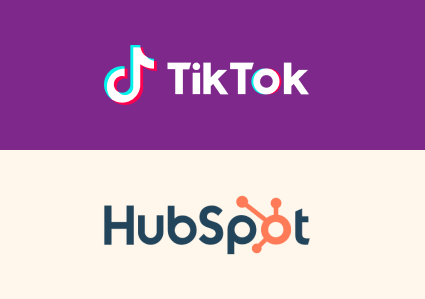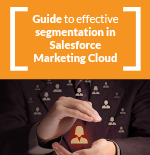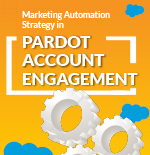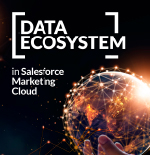In Salesforce Marketing Cloud, the foundation of creating the most perfect data ecosystem possible has a clear objective: to get the most out of this tool and of the data itself. Thus, with this it will be possible to segment, personalize, transact, feed your customers with additional data, etc. In this article we tell you about the importance of the data model in Salesforce Marketing Cloud.

Any time you spend on defining this data model as well as possible will pay off in the future, both in terms of time savings (costs) and in terms of return on your actions (ROI).
At the beginning, it is time to ask yourself a lot of questions and to meet with the different departments (Marketing, Sales, IT…) to see what each one needs and what is possible. It is time to make an inventory of our current data and to define what data we want to add:
- Do we have purchase data?
- Do we know where our customers shop?
- Do we have geolocation data?
- Do we want to record our own activity data?
- Do we have previous user activity data? Beyond purchases, we can look at visits to our website, previous activity in other communication tools, etc.
- Where we have or want to have our deregistration system?
- And a long etcetera, depending on the specific case of your project.
The Importance of the Data Model in the Salesforce Marketing Cloud
Choosing valuable data for our dialog with users
The types of data that provide us with value in defining the activity with our users are multiple: geographic, psychographic, demographic, behavioral, purchase histories, etc. And as we have mentioned, it is not only what we have, it is also what we want to have.
There are many possible strategies to enrich the database with additional information about our users. The easiest and most non-intrusive is behavioral, but depending on the actions we do and the type of products/services we have, other types of variables can also be requested.
Convergence of data from your sources in Marketing Cloud
Our data can converge in Marketing Cloud from different sources:
-
Analytics.
-
Web forms.
-
CloudPages.
-
Preference centers.
-
Via API from other platforms, sites, etc.
-
Point-of-sale systems.
-
Social networks.
-
Ecommerce.
-
User behavior.
-
RFM data.
-
Demographic variables.
{{cta(‘245be7ec-5c26-4fbd-a649-270b04341240′,’justifycenter’)}}
Since there are multiple sources, it is best to have as many collaborators and points of view as possible, as well as to plan and document precisely what we have and what we want to have.
If I haven’t convinced you with my arguments so far, let’s try a proverb:
“The future belongs to those who prepare for it today.”
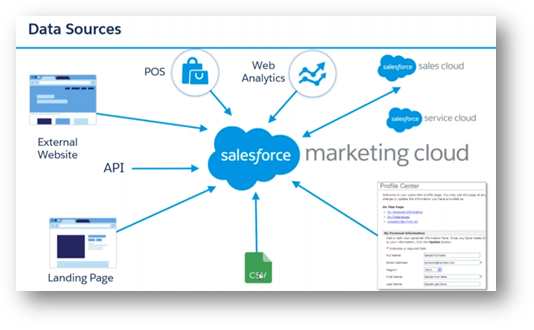
The master database
We already know which sources we are going to use in our data structure, but we still have a fundamental part: what is going to be our “master” table, which is also called Database Of Record or DBOR. This is the master table where we will have the essential data of our subscribers in a centralized way and above all, its opt-in status. It all depends on where you have the most updated information. Sometimes the choice is your CRM and then dump your data to Marketing Cloud. In others, to have both synchronized. In some cases, simply the status in All Subscribers, etc.



